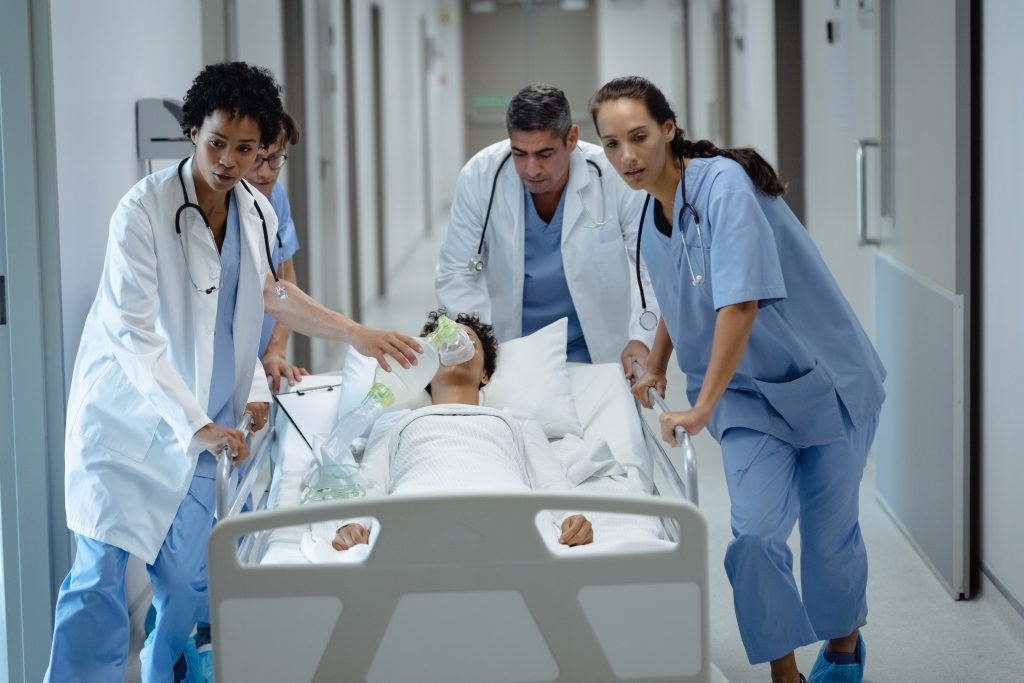4 Immediate Steps To Take During A Medical Emergency
One can’t know in advance when sickness will strike or for an injury to occur. The majority of serious health problems take people by surprise. Most people have no idea what to do if a loved one or close friend has a medical emergency. For events that can’t be anticipated, it’s always best to be prepared.
A medical emergency is a life-threatening situation that needs immediate attention. It’s often the way you react during these emergencies that will make the difference between life and death for the person involved. Beyond knowing to call for an ambulance, there are a few things one needs to know to do to ensure the person’s survival before the ambulance arrives, such as:
- It’s important to take first aid classes so that you can properly respond to an emergency as it arises.
- Always have a fully stocked first aid kit to help you respond to various situations. Some people keep two at hand. One for home usage and one that stays in the car. Make sure these kits are stored in an accessible place for adults but out of reach for children.
- Some people always have an Emergency Medical Card (EMC) on their person. This gives ambulance personnel critical information like any existing ailments or diseases, your blood group, allergies, emergency contacts, etc. You should always check to see if the injured party is carrying one, as this may prove helpful to resolve their issue.
Moreover, there’s a great site that offers help with certain medical emergencies, like heart attacks and strokes. This is because sometimes you might not notice the warning signs that precede a medical emergency. However, some of the signs of a medical emergency include:
- Continuous bleeding.
- Breathing issues such as difficulty and shortness of breath.
- Unusual behavior from mild to severe confusion.
- Chest pain and choking problems.
- Fainting or loss of consciousness.
- Persistent vomiting or coughing blood.
- Injury from a vehicle accident.
- Burns or inhaling smoke.
- Unexpected pain in the body, such as abdominal pain, severe migraines, etc.
- Sudden blurred or change in vision.
Hence, read more for certain steps will be discussed on what action to take in the face of a medical emergency.
- Assess The Situation
The first step in the face of a medical emergency is to calmly assess the situation. Before rushing in to help, you need to check that your safety and the safety of those in the vicinity will not be compromised. If the situation seems too dangerous to interfere, it usually is. Therefore, it would be wise to wait for professional assistance.
After you’ve ensured your safety, approach the injured party and assess their condition. This is important when you phone for an ambulance as you will be required to answer several questions about the condition of the injured party. Some questions include:
- Are they injured and where exactly?
- Are they bleeding?
- Are they breathing normally?
- Plan Your Treatment
After you’re done assessing the situation, you need to map the way forward. You may plan what action is feasible whilst waiting for professional help to arrive. Additionally, check if there’s any help you can give that won’t be detrimental to the injured party. By now, you should be able to determine whether the skills you have can improve the situation. As always, ensure the safety of the injured and yourself.
- Implement First-Aid
Apply your first aid training to the situation based on your primary assessment and whatever instructions you’re given by the professionals as they rush to arrive on the scene. Maintain your safety and talk to the injured party while you do so. Keep them from losing consciousness and talk to them about their situation whilst assuring them that the professionals will soon arrive. Moreover, this step only applies to those who have certified first aid training.
- Evaluate The Situation
Continuously check the estimated time of arrival of professional personnel. Consider moving the injured party carefully if their safety will be compromised by an extended wait. You may also assess the injured party’s wounds or physical state after applying first aid treatment for any improvement.
If the patient loses consciousness, provide basic life support until the professionals arrive. There are common medical emergencies that one should be able to identify and if the situation calls for it, treat it accordingly. Some of those common medical emergencies include:
- Heart Attack
A heart attack occurs when the heart does not get sufficient blood, the cells get damaged as a result and the cardiac muscles die due to a deficiency of oxygen. When too many cells die, a heart attack happens. The most visible symptoms are pain in the chest region. This is also accompanied by fainting, excessive sweating, and shortness of breath. The symptoms often differ between men and women.
Men often exhibit cold sweats and a stabbing pain that can be felt throughout the left arm. On the other hand, women exhibit shortness of breath, an upset stomach, and dizziness. Survival from a heart attack is possible if the patient can be treated effectively within the first 90 minutes of the attack so their symptoms need to be closely monitored.
If you suspect someone of having an attack, allow the patient to sit in a comfortable position. You may give them an aspirin tablet as it can lower the risk of blood clots forming. If the patient’s breathing is labored or unresponsive, the administration of Cardiopulmonary Resuscitation (CPR) can increase their chance of survival.
- Head Injuries
When an object hits the head hard, a traumatic head injury could occur. This is a condition not to be taken lightly and it should be handled immediately. Failure to treat it might lead to permanent brain damage or dysfunction.
Signals of head trauma include dizziness, serious confusion, short-term memory loss, and migraines. There is also a chance of a ringing in the ears, photophobia, and blurry vision. After immediately calling for professional help, check the patient’s airways, listen to their breathing, and be ready to administer CPR.
With traumatic head injuries, it’s not advisable to move them until medical help has arrived especially if the patient is unconscious. If there’s bleeding, firmly press a bandage or cloth on the wound to staunch it. If available, apply ice packs to the swollen areas.
- Burns
Burns injuries are caused by heat due to fire accidents or explosions or in the case of suicidal attempts. First aid help varies with the cause of the burn wounds. If caused by heat, the burns must be cooled immediately with cold water until relief is felt. Additionally, ice blocks do more harm than good on burn wounds.
For electrical burns, turn off the power that affected the patient. Electrical burns cause more internal damage than external, so wait patiently for medical personnel to arrive to assess the patient. For burns caused by chemical spills, clean the wound with a cloth or gloved hands. You should dispose of the contaminated clothing appropriately and remain cautious of further contamination.
- Stroke
Strokes are another emergency where brain cells are affected by inadequate blood reaching the cells. This is caused by excessive bleeding, hemorrhages, or blood clots. Stroke symptoms include slurring of speech, drooping of the mouth and eyes which is usually on one side, loss of motor control in the arms, blurry vision, and dizziness
If you suspect someone close to you is experiencing a stroke, make sure they’re in a comfortable position. If you can manage it, have them lying on their side with their head slightly raised with support just in case they feel nauseated. Check their breathing and perform CPR if required.
You may also loosen any restrictive clothing, such as ties, scarves, even necklaces or chains as you calmly talk to them. If available, cover them in a blanket to keep them warm. Don’t give them anything to eat or drink as it might cause them to choke.
- Convulsions
Commonly known as seizures, this is a rapid uncontrolled shaking of the muscles created due to repeated muscle spasms. It’s usually caused by abnormal electrical impulses in the brain. The common symptoms include shaking of the body, abnormal eye activity, grunting, frothing at the mouth, and clenching of the teeth.
Most seizures cease on their own after some time. In this case, applying first aid procedures aims at preventing further injury to the affected person. Make sure their airways remain clear and lay them down to prevent them from falling. Loosen any clothing especially around their neck as you wait for them to recover.
Conclusion
In a medical emergency, always stay calm and don’t take risks that could harm yourself, witnesses, or the injured party. Do your best to manage the situation in a manner that doesn’t allow the injured person’s condition to deteriorate. Preparing for medical emergencies is an ongoing process as there are ways for new information to be digested and implemented. Moreover, your actions could save a life.




